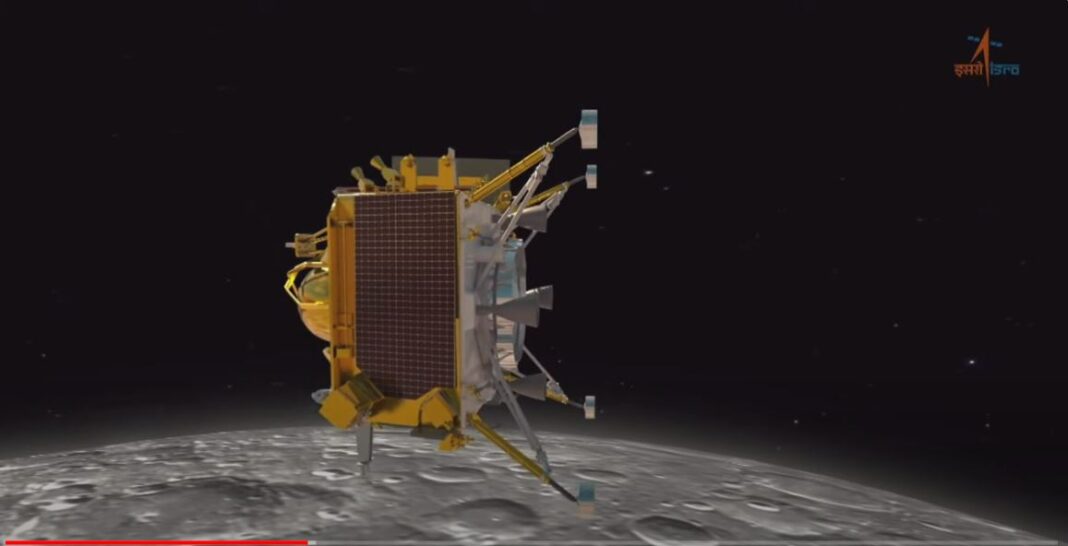In a momentous achievement, India has etched its name in history as the fourth nation to triumphantly land an unmanned spacecraft on the moon. The remarkable feat was accomplished by the Chandrayaan-3 mission, with its Vikram lander gracefully descending near the moon’s southern pole on Wednesday, August 23rd, at 8:33 a.m. EDT.
This historic accomplishment places India alongside the esteemed company of Russia, the United States, and China – the sole nations to have previously achieved lunar landings. The Indian Space Research Organization (ISRO) expressed their elation, highlighting that this milestone is a testament to the nation’s remarkable strides in science, engineering, technology, and industry.
“This achievement marks a significant step forward for Indian science, engineering, technology and industry, symbolizing our nation’s progress in space exploration,” officials at the Indian Space Research Organization (ISRO) said in a statement. “The soft landing of Chandrayaan-3 is a monumental moment that not only fuels curiosity but also sparks a passion for exploration within the minds of our youth.”
“It generates a profound sense of pride and unity as we collectively celebrate the prowess of Indian science and technology,” the statement read.
The Chandrayaan-3 mission, overseen by ISRO, embarked on a 40-day journey from Earth, with a budget of $90 million. Consisting of a propulsion module, lander, and rover, it soared into space aboard a Launch Vehicle Mark 3 (LVM3) rocket from Sriharikota, India, on July 14.
Drawing on lessons from a previous attempt in 2019, where communication was lost just above the surface, ISRO worked meticulously to ensure the success of Chandrayaan-3. Named after the visionary physicist Vikram Sarabhai, the lander featured enhanced sensors, reinforced legs, and four throttle-able engines to ensure a controlled descent.
Once on the moon, the Vikram lander is expected to operate for one lunar day – approximately two weeks on Earth. Armed with scientific instruments, it will analyze the moon’s thermal conductivity, temperature, seismic activity, and plasma density. The mission also includes the deployment of Pragyan, a solar-powered rover tasked with investigating the lunar soil’s chemical and mineralogical composition.
This triumph follows Russia’s recent setback in its lunar mission, with a crash landing on August 20th. China, the United States, and now India stand as the successful nations in lunar exploration. As the moon’s surface continues to captivate humanity, Japan’s upcoming Smart Lander mission, along with U.S. companies’ planned lunar landers, herald a new era of exploration and discovery.
After the success of the mission, Prime Minister Narendra Modi congratulated the entire team and expressed his happiness. During this, he said in his speech, “After this mission, the chest of every Indian is full of pride.”
NASA Administrator Bill Nelson congratulated ISRO
American Space Agency NASA Administrator Bill Nelson has congratulated Chandrayaan-3’s Vikram Lander on its successful landing on the south pole of the Moon. He said, “Congratulations to ISRO on the successful landing of Chandrayaan-3 on the Moon’s South Pole! Congratulations to India on becoming the fourth country to successfully soft-land a spacecraft on the Moon. We are glad to be your partner in this mission.”
Chandrayaan-3 represents the 145th lunar mission endeavor since 1958, showcasing humanity’s enduring fascination with Earth’s celestial neighbor. As India rejoices in its monumental accomplishment, the legacy of Vikram Sarabhai and the nation’s dedication to space exploration shine brighter than ever.
A global media for the latest news, entertainment, music fashion, and more.




